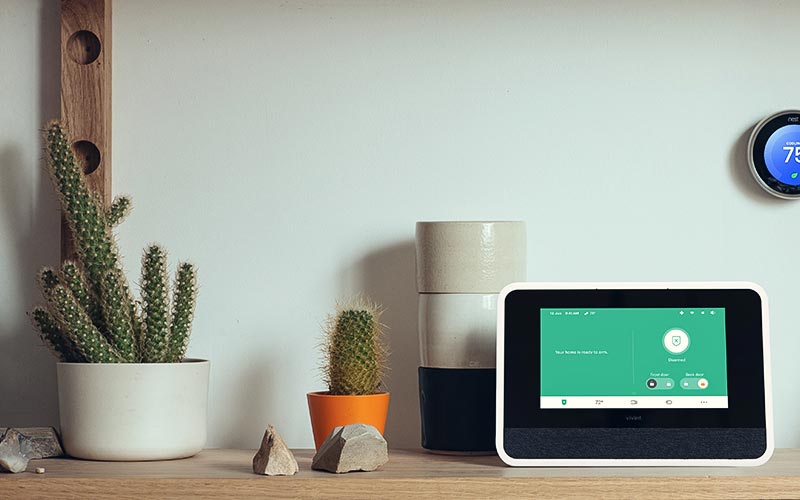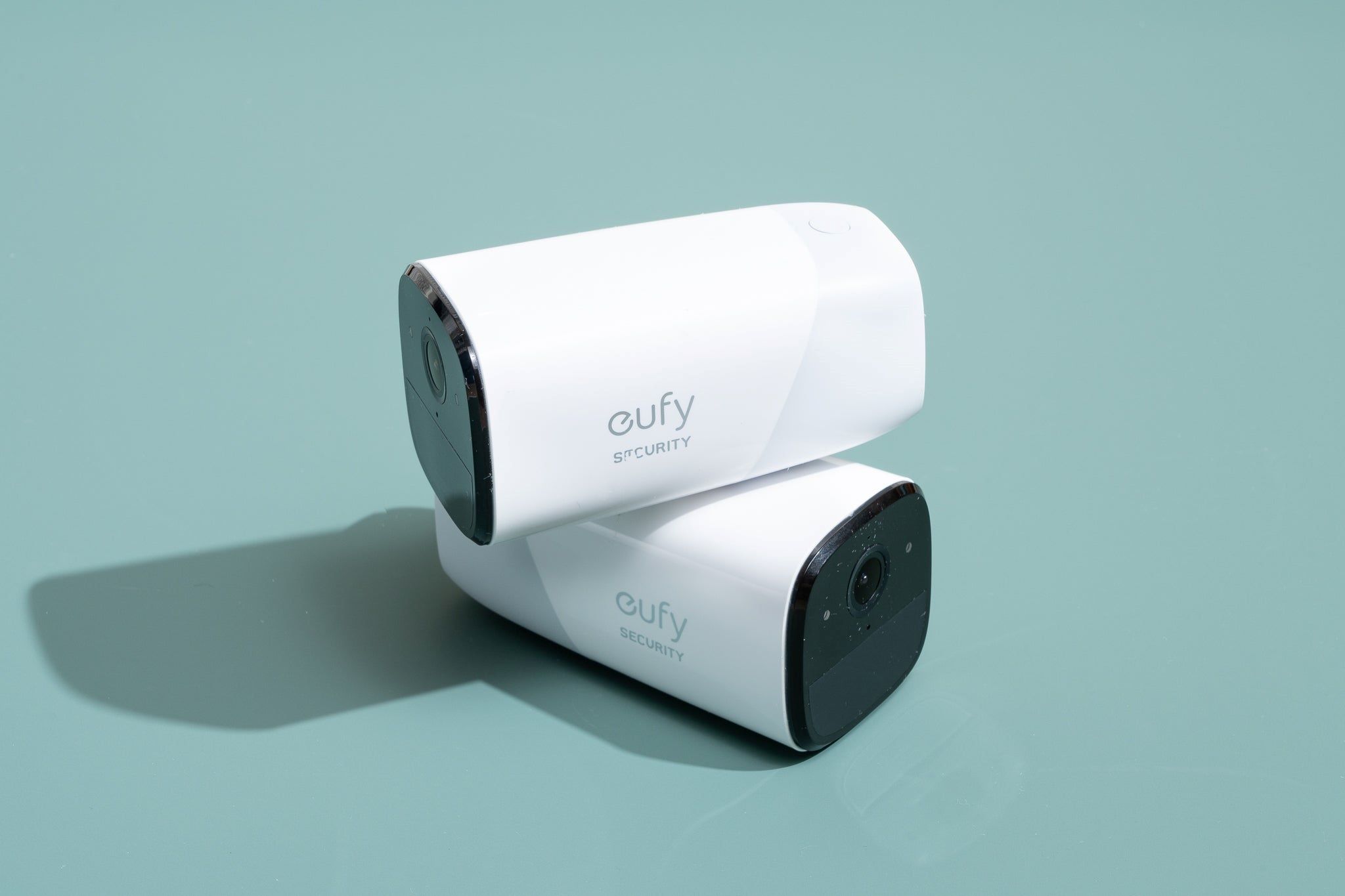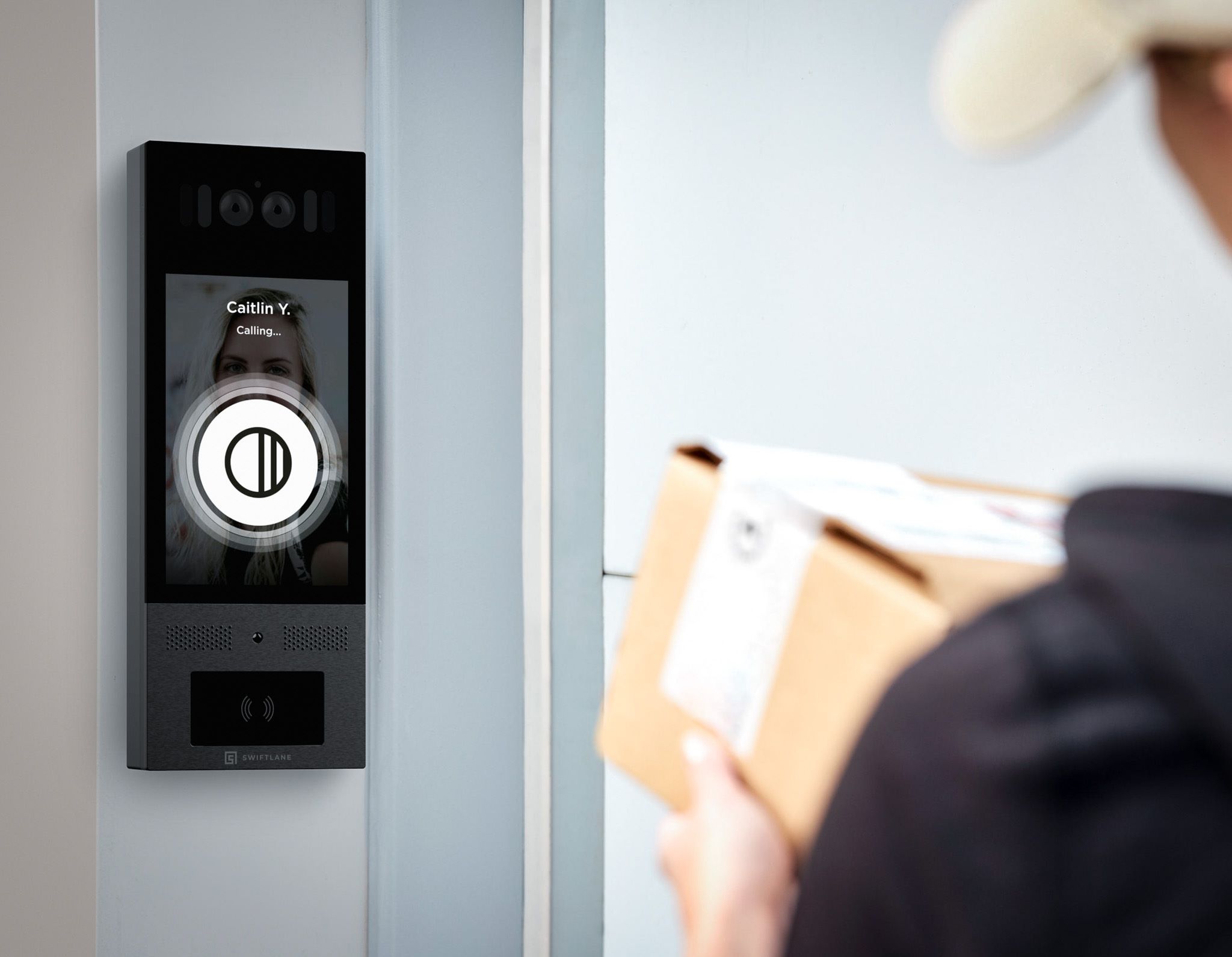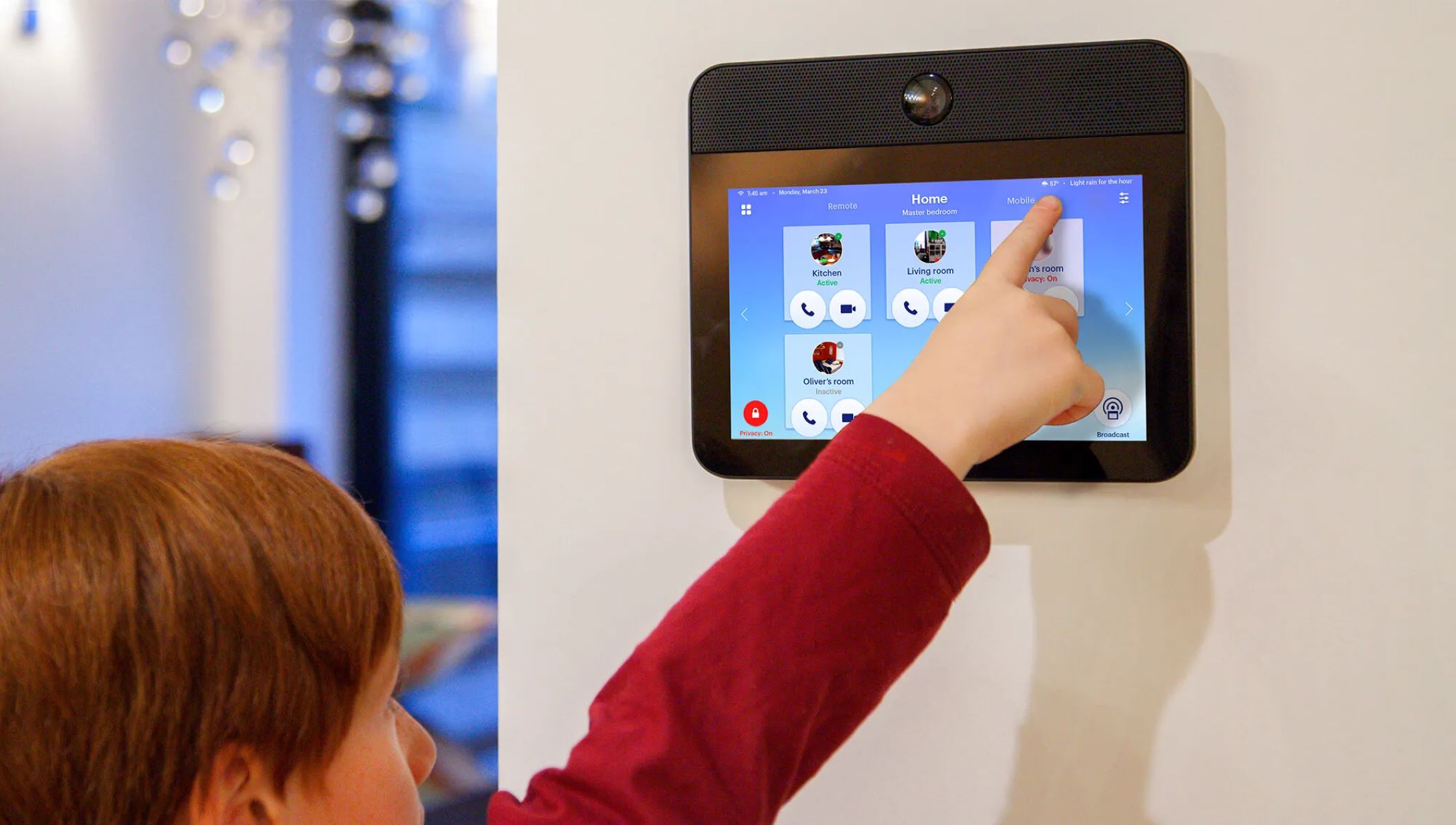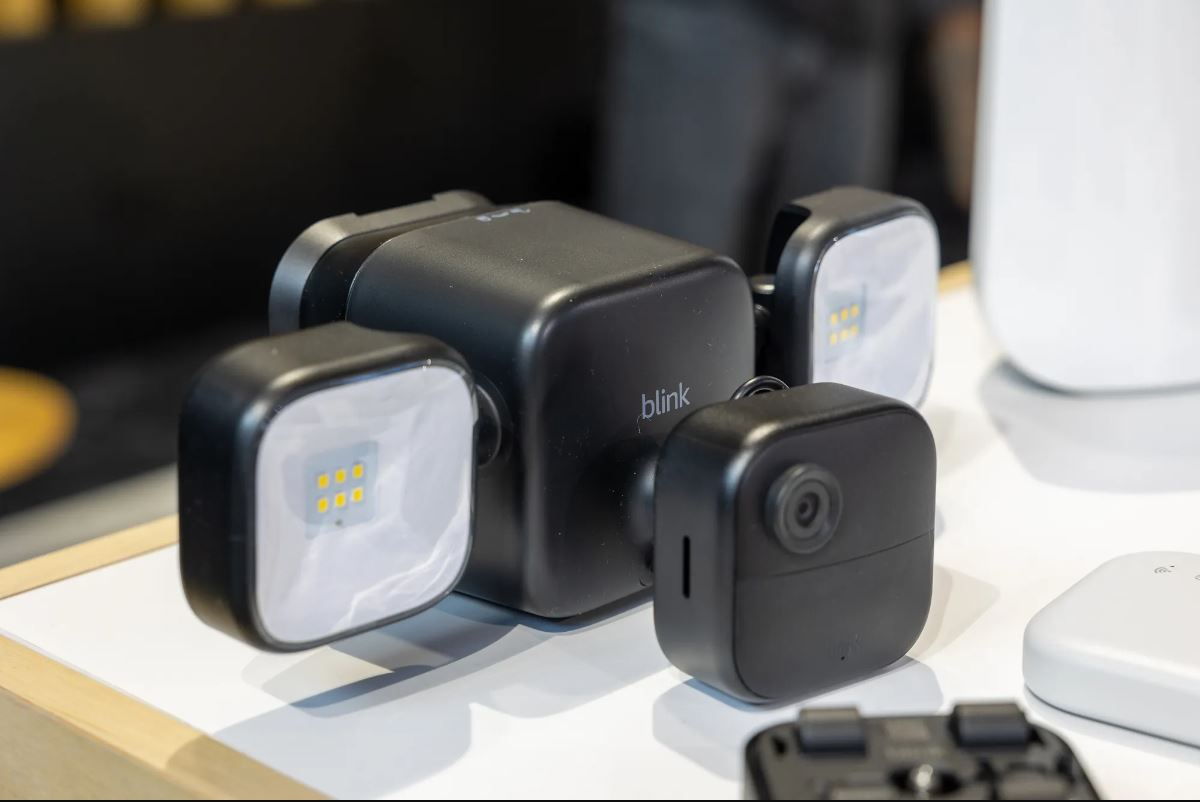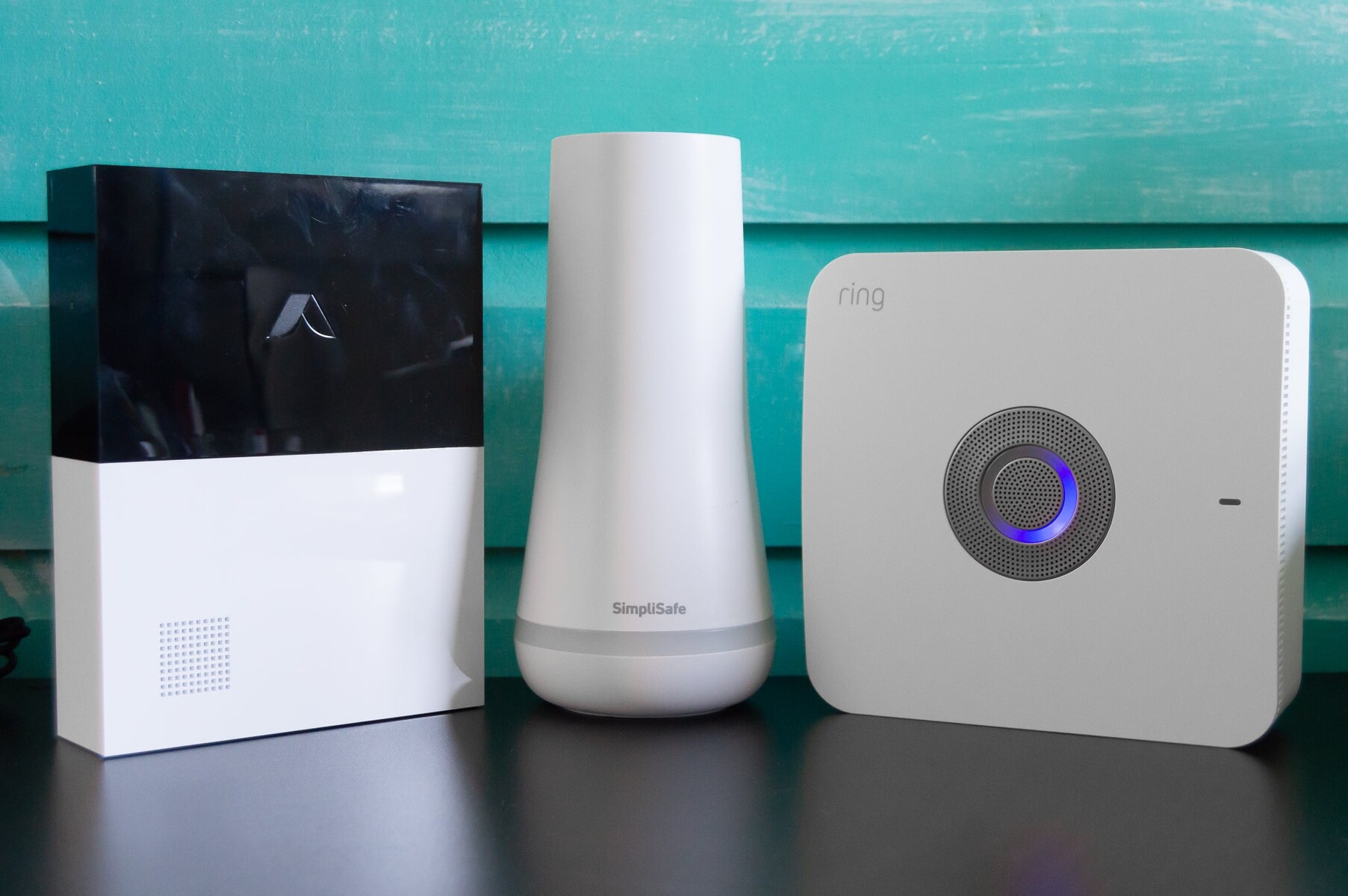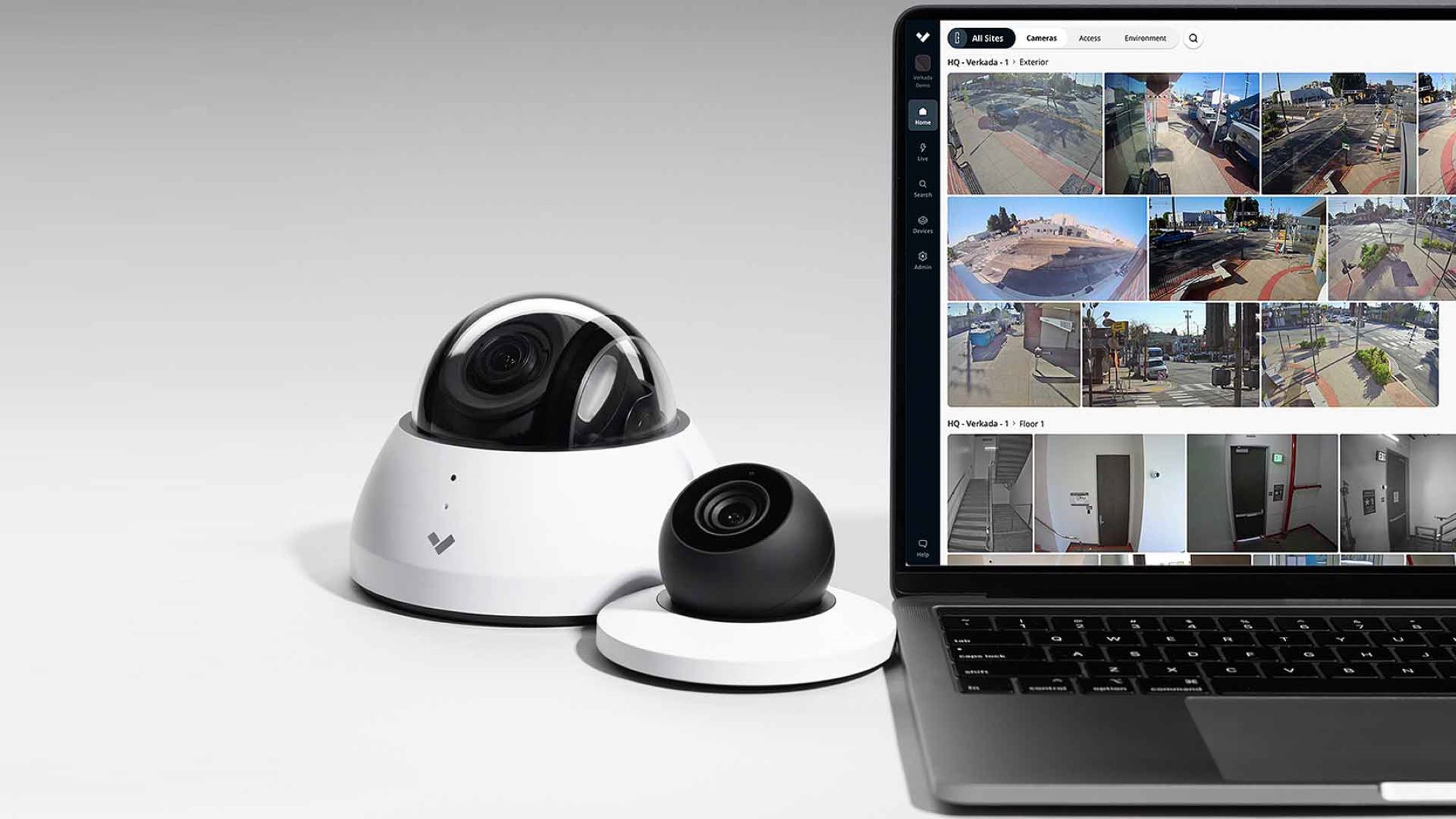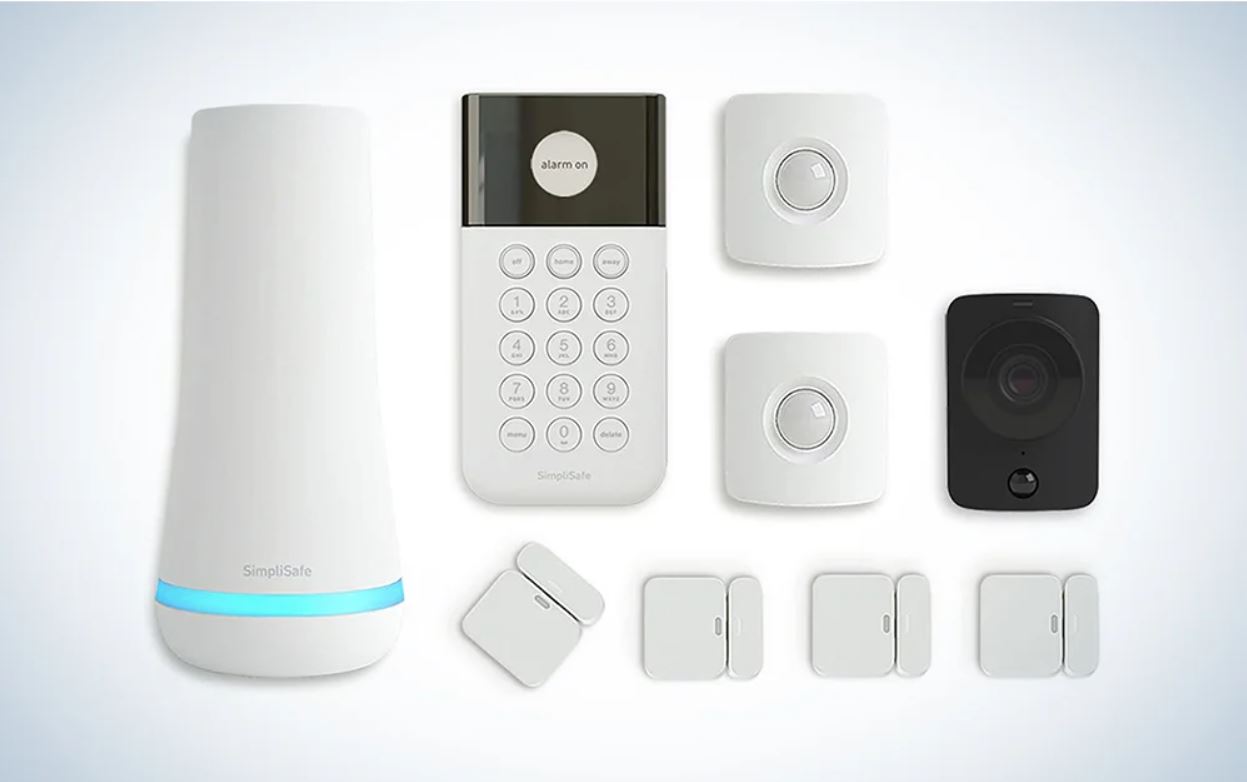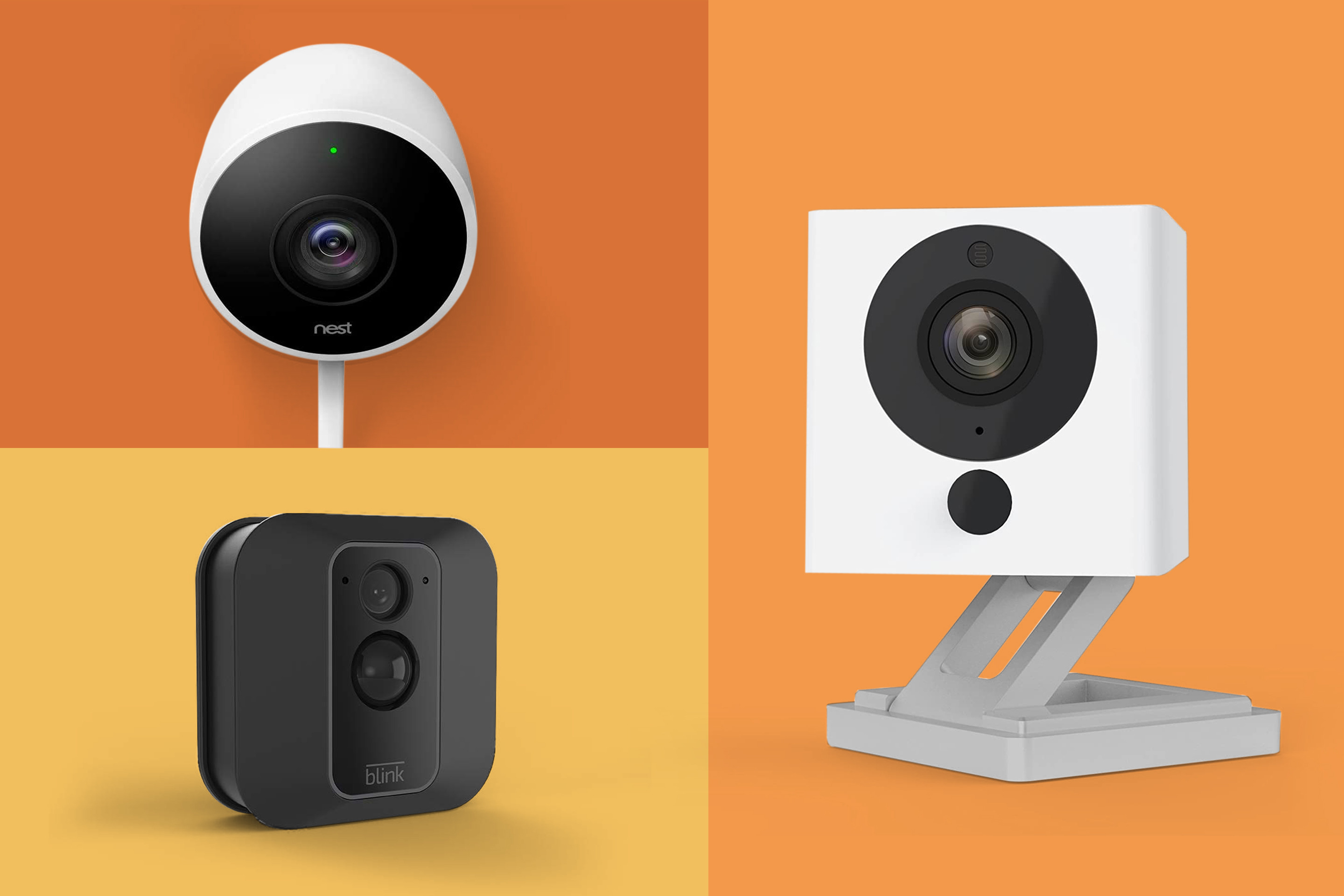The best wireless security systems can make it simpler to keep your home safe from intrusions. You can achieve peace of mind and safety, knowing that your home is protected at all times, whether you are at home or not. Wireless systems also lead to cost savings since they don’t require the typical installation and maintenance. They also offer much flexibility since the devices can be maneuvered without having to worry about cords and plugs. If keeping your home safe is a priority, then a wireless security system is the ideal place to start.
Inside this Article
- What Defines a Wireless Security System?
- 8 Best Wireless Security Systems
- How Does a Wireless Security System Work?
- What Are Security Systems For?
- Security Systems for Crime Prevention
- Why Use a Wireless Security System?
- Final Thoughts on the Best Wireless Security Systems
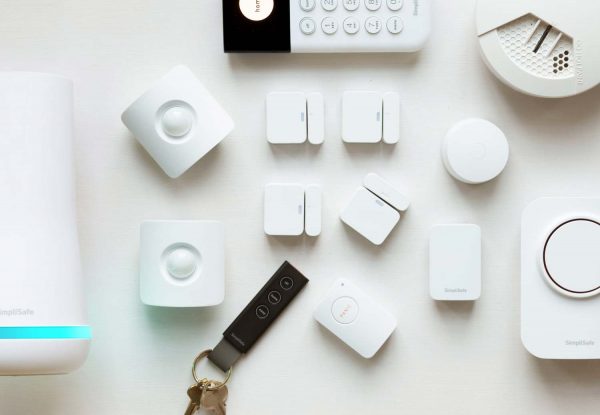

What Is a Wireless Security System?
When we speak of a wireless security system, the first thing that comes to mind is that it doesn’t have any wires or optic fibers. But this definition is too simplistic since it doesn’t tell you how wireless security is supposed to work. We offer a better alternative and present a few requirements to define a wireless security system.
Pool of Devices
The first requirement for a wireless security system is that it needs to have a variety of devices under its wing. It can include any combination of devices, each with its own purpose for security. It can include security cameras, motion detectors, multiple types of sensors, yard signs, and so on.
Most security systems are also equipped with a single base station or hub and any number of extenders. The base station is generally a touch screen mounted on your wall or a small box placed on top of your counter or inside a cupboard. The base station is at the center of the security system and it’s responsible for communicating signals to and from the accessory devices. Then you have extenders that redirect Wi-Fi signals to far-off devices.
Wireless Connectivity
Another aspect of wireless security systems is reflected in their name—wireless connectivity. Most can connect through protocols like Wi-Fi, Z-Wave, Zigbee, Bluetooth, and so on. These allow sensors to send signals to and from the central hub, and the central hub sends you updates via text or mobile app. The same protocols allow your central hub to communicate with third-party devices such as smart lights, etc. In this way, wireless security systems are part of the new trend called smart home automation.
Battery-Powered Systems
The third requirement is that the devices are powered by batteries instead of the standard electrical current. The batteries on these devices can either be standard-issue or rechargeable. However, specific components like base stations and extenders are typically wired and need to be plugged in all the time. But this shouldn’t be a problem since these devices are usually kept indoors.
8 Best Wireless Security Systems


There is a selection of wireless security systems or “kits” available in the market. These come with various advantages, including the fact that you can expand it with as many devices as you need. In addition, you have the option to monitor the security system by yourself or have a professional monitoring plan. We’ve compiled some of the best brands to offer wireless security systems for you to consider.
1. Ring Alarm Security Kit
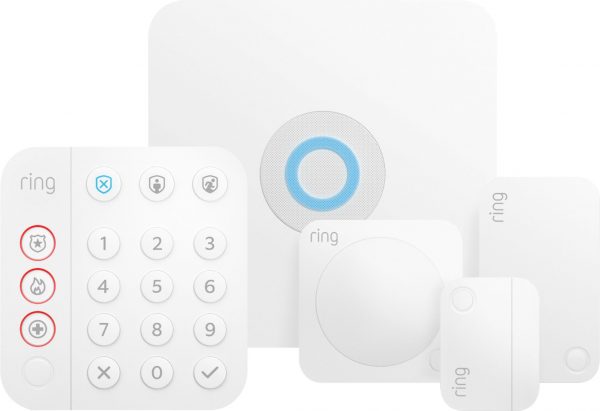

The Ring Alarm Security Kit is an affordable and easy-to-use DIY kit that comes highly recommended for beginners. It’s very similar to the Ring Wireless Security Kit in terms of features and price.
Components
The great thing about the Ring Alarm Security Kit is that it lets you select the number of devices you need. It starts with a five-piece kit and ends with a 14 piece kit. A typical eight-piece kit includes four sensors for your doors and windows, a base station, a keypad, an extender, and a motion detector. Unfortunately, it doesn’t come with the popular Ring security camera, but you can purchase one separately. You can also add as many extenders, motion sensors, and door/window sensors as needed.
Features
The kit has a bunch of privacy features, which include a Control Center. This functions as a dashboard for your account. It also offers two-factor authentication, which requires both a password and a passcode to access an account. Ring’s motion alarms can also tell the difference between a pet and a human, to lessen the chances of false alarms.
The Alarm Security Kit is also capable of integrating with smart speakers that run on Alexa. That is, you can issue verbal commands to your smart speaker to get the system to report its current status. Ring is also integrated with third-party devices, including dimmer switches, smoke detectors, and smart locks.
Monitoring Add-Ons
If you want professionals to look into your system, that much is possible with a small monthly fee. The way this works is that the device will notify a security team if and when an alarm is triggered in your house. The team will then contact you to confirm if the situation is an emergency and if it is they will contact the police on your behalf.
2. Abode Essentials Security Kit
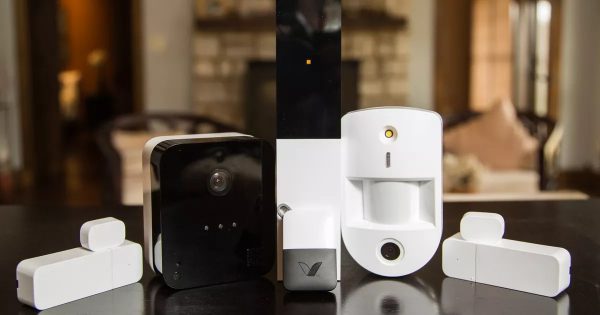

Some security systems offer home automation on top of the basic security services that they provide. The Abode Essentials Starter Kit is a wireless security system that also alternates as a smart hub. It contains all the necessary components to automate third-party devices like smart lights, plugs, cameras, and more.
Components
The Abode Essentials Starter Kit is a simpler setup compared to the Ring Alarm Starter Kit. It comes with a single sensor, a single motion sensor, plus a remote-control keypad. Also part of the package is the Abode gateway, which serves as the control hub for the setup. The gateway can connect to external devices via Zigbee and Z-Wave radios. If a single entry and motion sensor isn’t enough, you can always purchase additional sensors.
Plans
Abode also offers professional monitoring, which is available in three plans. The Basic bundle makes use of an automated monitoring system. It includes IFTTT support that will allow you to create as many automatic schemes as you want. These automation schemes will let you control external devices paired with the system.
An alternative would be the Connect plan, which features professional monitoring, 3G service, and phone support. It also keeps logs of your sensor history. Lastly, you have the Connect + Secure plan, which includes 90 days of history logs and professional monitoring.
Modes
The alarm system offers three modes for the system. The Standby mode is turned on by default, and it makes a distinct chirping sound whenever a door or window is opened. Meanwhile, the Home mode takes about 30 seconds to initiate a mode switch when you get home. The Away mode is the high-alert mode that arms every sensor in the house.
3. Vivint Smart Home DIY Kit
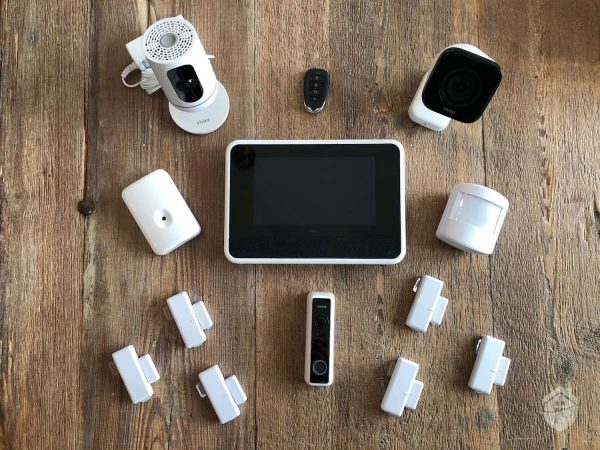

Vivint Smart Home is one of the more premium brands to offer security systems for homes. Its traditional offering requires installation by a professional, but it also offers a DIY kit.
Components
The DIY kit is simple enough to be installed without professional help. It contains a single hub, two sensors for windows or doors, a motion sensor, and a stand for the hub. Vivint also offers a doorbell or indoor camera to the package. The only device you can’t get with the DIY package is the Outdoor Camera Pro since this requires professional installation.
Features
The smart system can be controlled mainly via Android and IOS apps, but a PC or web console can also be used. The mobile app will show you which doors and windows are open or closed. It will also alert you whenever a door or window moves from its current state. The app presents you with the option to lock and unlock doors, as well as the option to arm or disarm the system.
There are other things you can do with the app, such as viewing the camera’s live feed. You can also view pre-recorded clips for when a motion sensor is tripped or when a person rings the doorbell. The central hub also offers support for Amazon Alexa and Google Assistant. You can check the status of your security systems via voice commands with this feature.
Installment Plan
On the other hand, the Vivint packages are a little more expensive than competing systems. But it’s not that expensive compared to other DIY solutions. Luckily for users, Vivint offers an installment plan that lets you pay out your balance within 42 to 60 months at zero interest. They also accept lump-sum payments as an alternative to monthly payments.
4. SimpliSafe Home Security Kit
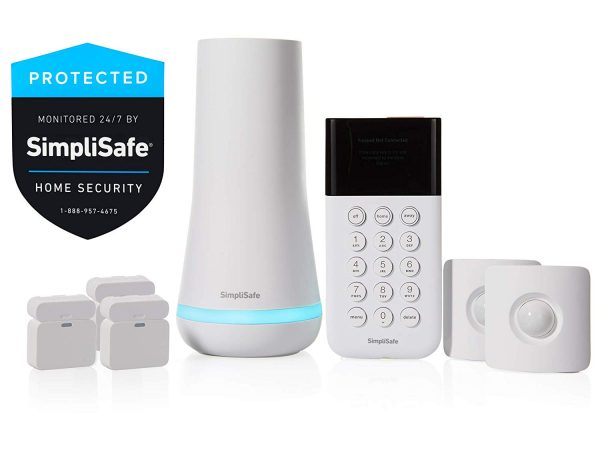

SimpliSafe is another effective yet simple DIY wireless security solution. The system can keep your home safe from both intruders and environmental hazards. It offers self-monitoring or professional monitoring, whichever you prefer.
Components
SimpliSafe offers five different packages. The most expensive package is Haven. It comes with two motion sensors, four sensors for your doors and windows, a siren, and a panic button that you can press in case of an emergency. It also features environmental sensors that can detect smoke, carbon monoxide, and water leaks.
Meanwhile, the cheapest option is the Foundation kit. It includes a simple base station, an entry sensor, a yard sign, and decals. You can also purchase additional components individually and add them to your system.
Features
The base station itself connects through the standard 802.11n 2.4GHz Wi-Fi frequency. Unfortunately, there is still no support for alternative wireless protocols like Zigbee, Z-Wave, or IFTTT. But on the bright side, the base station can function even without the internet. This is meant to protect the system from the risks that come with IoT integration.
Modes
There are three modes available. The Home mode only activates sensors next to doors and windows, while the Away mode activates everything. The Test mode is the go-to mode for setting up the system and checking if the alarms work. Each time you switch modes, the hub announces which mode you’re going into.
When the alarm is triggered, you have 30 seconds to disarm it. If you don’t disarm it within that period, it will send an alert to SimpliSafe, and the system will call you for your safe word. If you don’t provide the safe word, the system will call the police based on your location.
Visit SimpliSafe Official Website
5. Wink Look Out Kit
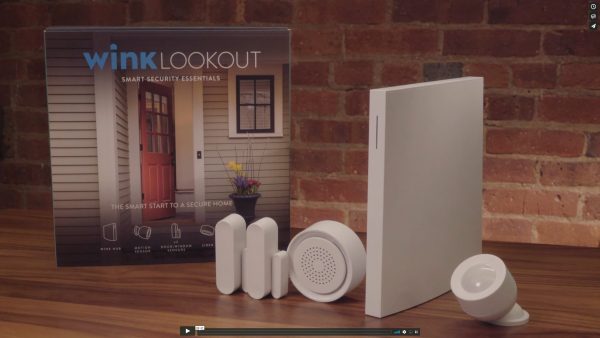

The Wink Look Out is another great option for a DIY wireless security system. It comes with all of the essential devices to keep watch over your home. The kit includes the central hub, a pair of sensors, a single motion sensor, and a siren. You can purchase additional sensors and sirens individually, as needed. The kit is also easy to set up and easy to use.
Components
The central hub offers wide support for wireless radio protocols. It supports Wi-Fi, Bluetooth, Z-Wave, Zigbee, and several other new protocols. This allows it to serve as an alternate home hub for other smart devices in the network. It can pair with smart lights, locks, speakers, garage door openers, and so on. Now, there are two ways for your sensors to get in touch with the hub. There’s a wireless method that relies on Wi-Fi and a wired method using Ethernet cable.
Features
One very interesting feature of the Wink app is the motion sensor sensitivity. This allows you to customize the sensitivity of each of your sensors. That is, you can set the sensitivity to high, medium, or low levels depending on your risk tolerance. If something triggers the alarm, it will set off the siren to a high-pitched note. You can also set the hub to play music whenever your garage door or door opens or closes.
Controls
The Wink Look Out offers controls through its mobile app. Now, the Wink app wasn’t made exclusively for Look Out, but you will find a section on the app dedicated to it. During the setup, the app will require you to pair each of your security devices with itself. The app allows you to turn sensors on and off.
6.GetSafe Home Security Kit
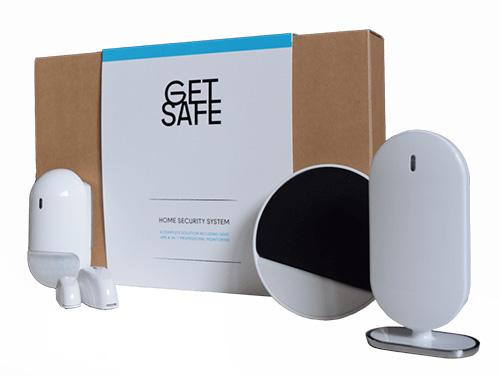

Bay Alarm Medical’s GetSafe Home Security Starter Kit is a simple and expandable wireless security system. It offers professional-looking hubs that readily connect to the sensors. This means that it’s very easy to install and even easier to operate. However, Bay Alarm does require its users to get professional monitoring, which means that you’ll be paying up monthly by default.
Components
Included in the GetSafe kit are the central hub, a siren, a single motion detector, and a single sensor for a window or door. You also get a LAN cable, a double-back tape for mounting the sensors to your doors and windows, plus extra AA batteries. Since a single sensor and motion detector won’t be enough, you should probably purchase additional sensors and/or motion detectors.
Features
The GetSafe kit is also interoperable with other switch-based devices in the home. It supports IFTTT protocols, which means that you can pair it with switch-based devices like smart lights, door locks, and so on. You can pair up these devices with the GetSafe app and then use the app as a remote control for these devices. It’s also possible to include an IFTTT applet that can instruct Alexa to do things like arm and disarm the system.
Controls
You can control the system mainly via a mobile app. There are four system statuses or modes for the system. There’s Armed Day, Armed Night, Armed Away, and Disarmed. The app also features a temperature section that tells you how hot or cold any room is inside your house. But of course, you need to have thermostats installed for that. It also keeps a log of when the motion detectors and other sensors are triggered. It keeps a log of system status across time.
7. Nest Secure Kit
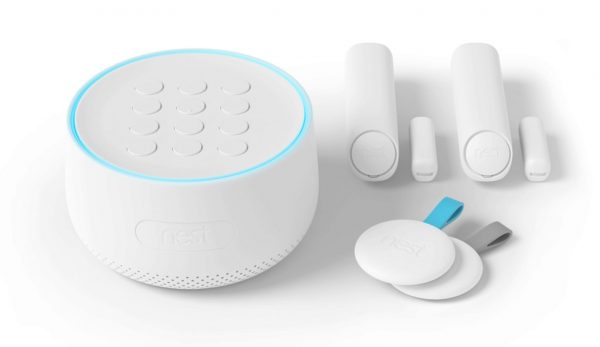

Secure by Nest is another DIY wireless security system that offers to protect your home. Nest has a solid reputation in the security industry and is well-known for its Nest security cameras. Like other security systems, the Nest Secure alerts you when doors or windows are opened or when motion is detected.
Components
The Nest Secure kit comes with a Nest Guard, which serves as the system’s central hub. It also includes a pair of Nest Detect sensors and a pair of Nest Tag keychain fobs. Since a pair of sensors won’t be enough for most homes, we highly recommend getting an extra pair of sensors.
The Nest Detect sensors are meant to be placed next to doors and windows and can detect when those are opened. Each sensor has an average range of about 15 feet. At the bottom of each sensor is a LED light ring plus a button. Pressing the button allows you to open the door (or window) within 10 seconds without triggering the alarm.
The Nest Tags, on the other hand, are used to arm or disarm your Nest Guard. They basically function as keys that you can attach to a keychain or hand over to someone staying at your house. All it takes is a single tap of the Nest Tag onto the Nest Guard to disarm the latter.
Controls
You can control the system mainly via the Nest Guard. There are three arming options available: Off, Home, and Away. It features an Info button that tells you if you’ve left any doors or windows open. The Nest Guard is also capable of integrating with other Nest security products and even third-party devices.
Visit Nest Online Store via Google Store
8. Frontpoint Home Security Kit
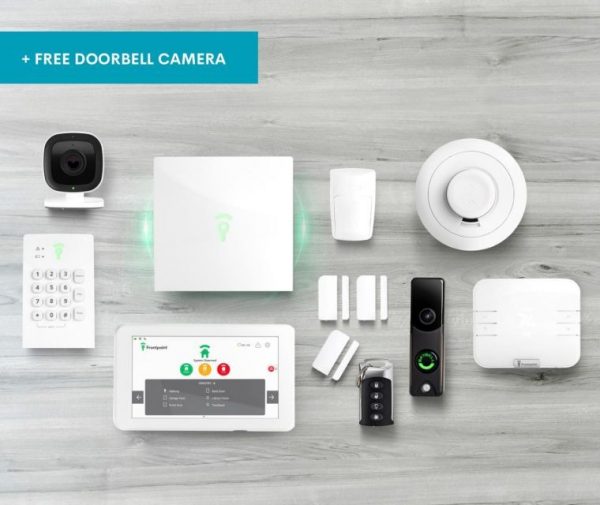

Frontpoint Home Security is another affordable DIY wireless security for your home. It offers a great selection of components for a reasonable price. However, it’s one of the few on this list that does away with self-monitoring. In other words, professional monitoring is mandatory.
Components
Frontpoint offers three pre-configured packages, but it also allows users to customize packages. Each pre-configured package contains the essentials, including a hub and keypad, video doorbell, a yard sign, and window stickers. The key difference among the packages relates to the number of devices. The cheapest package is one called Safehouse. It features two door/window sensors plus one motion sensor.
Meanwhile, the Bunker package is the mid-range option with three windows/door sensors plus one motion sensor. It also includes an indoor camera plus a smoke and heat sensor. The most expensive package is Fortress. It comes with six doors/window sensors, two motion sensors, an indoor camera, and smoke and heat sensors.
Features
While mandatory professional monitoring may turn some users off, it does come with a lot of perks. It gets you regular notifications via in-app alerts or texts, motion trigger alerts, geo-location services, and crash and smash protection. Professional monitoring also gets you access to the mobile app, where you can do a lot of things.
The mobile app has a simple button for arming or disarming the system. You can also use the app to view live or pre-recorded footage from each of your security cameras. In addition, it comes with free cloud storage that you can use to store up to 1,000 clips. You also get controls for your smart lights and locks and customize your notification settings and alarm settings.
Visit Frontpoint Official Website
How Does a Wireless Security System Work?


Wireless security systems can monitor your home for a variety of things, but for the most part, it keeps an eye out for intruders. You will need a few moving parts to accomplish this task: sensors, a base station, and a Wi-Fi connection.
You can install the sensors around the house at entry points like doors, windows, and hallways. These devices can detect motion, whether that be a human moving inside your house or a window or door is opened or closed. Meanwhile, you can usually plug the base station or central hub into an electrical socket, or have it stuck to your wall with strong adhesive.
The most basic modes are armed or disarmed, where all components are turned on and will report any movement when the system is armed. However, most security systems now have a variety of modes besides armed/disarmed. Some offer a special mode for daytime and another for the nighttime. The daytime mode offers more lenient criteria for motion detection whereas the nighttime mode offers stricter criteria.
When an armed system detects movement, it will send signals to the hub. The hub will then sound an audible alarm and then send you a notification via phone call, text, or mobile app. It can also alert the monitoring center if you have professional monitoring. The whole process just takes a few seconds, and the alerts are sent to you automatically. It doesn’t matter where you are, and you’ll know if someone attempts to break into your home.
What Are Security Systems For?
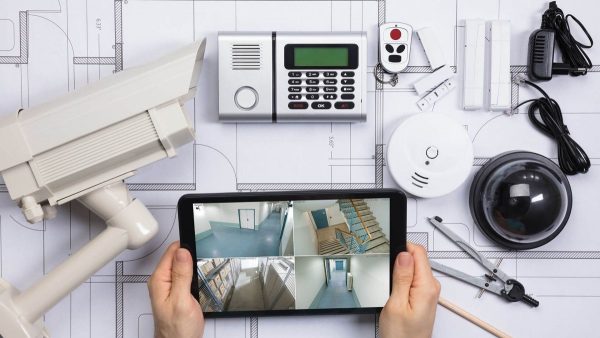

The main purpose of a security system is to keep your family and your home safe from intruders. It helps protect your family from a variety of threats such as a home invasion, burglary, stalking, and so on. It may also protect your family from a variety of natural disasters like fire, floods, and storms.
Security systems also allow you to keep watch over your property at all times, especially when it is in its most vulnerable state. Of course, your home is most vulnerable when you are away or sleeping, or busy with other things and can’t pay attention to potential intrusions. With security cameras, you can easily peak into your back or front yard from the safety of your room. When you go out, you can also replay footage once you get back. Meanwhile, sensors alert you regarding any motion inside the house. They’re especially useful when everyone is asleep or away from the home. They can also alert you regarding environmental hazards like floods, storms, and fire in some cases.
The benefits of a wireless security system are not just physical but also psychological. The sense of security that you get from knowing that these high-tech devices are monitoring your house is perhaps the greatest benefit of all. It helps to know that something is watching over your house even when you’re asleep or when you’re away. On top of that, it’s comforting to know that emergency services (fire, police, and ambulance) are within easy reach.
Security Systems for Crime Prevention
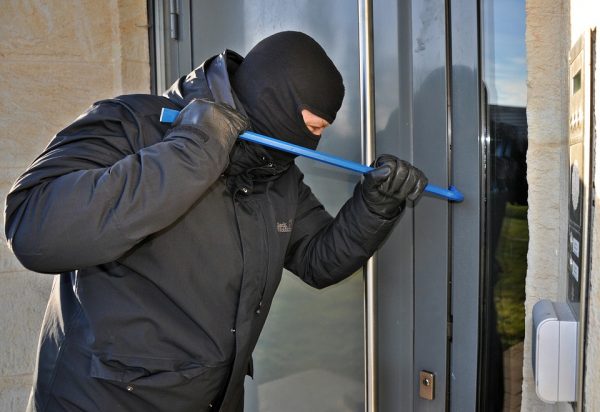

Now, the rather painful truth is that security systems are not a full guarantee of security. They won’t stop intruders, thieves, stalkers, and what-have-you from invading your home. And ultimately, it won’t guarantee that crime will not take place inside your home.
But while these systems do not fully eliminate the risk of crime, they are effective at deterring intruders. Studies have shown that installing a security system reduces the chances of a property getting burglarized. Because as it turns out, intruders are really scared of alarms and security systems in general. Most burglars even check for alarms before breaking in and are deterred when they find one.
Having a security system, especially those with security cameras is also a great way to collect evidence in case something happens at your house. Besides being alerted to an intruder in your home, you can see live feedback of the intruder’s actions. Then you’ll have something to present to the police to help them in the search for the intruder, or even in court. It’s also a great way to keep tabs on your family members, though it may erode the most privileged right to privacy.
Also Read: The Best Security Cameras for Your Home
Why Use a Wireless Security System?


Regardless of where you live, there is always a risk of crime and natural disasters happening. It doesn’t even matter how large or small your house or apartment or rental property is, the risk is ever-present. This is exactly what security systems are built for, and while they cannot fully eliminate the risk, they do help reduce it. But while there are a lot of traditional systems still in the market, we’ll show you why you may want to move on to a wireless security system.
1. Do-It-Yourself (DIY) Design
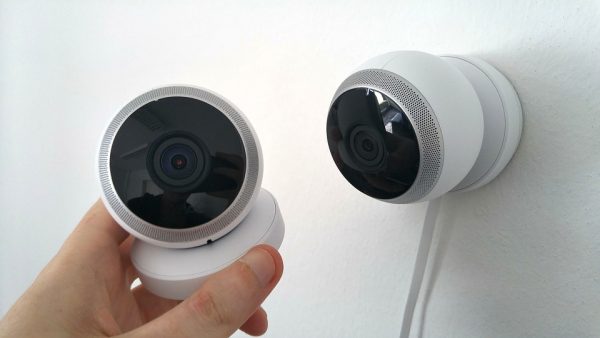

Older security systems usually required professional installation, which meant drilling into your walls and entangling long cable lines. It’s a complicated process overall.
Luckily, most wireless security systems now have a DIY design. In fact, manufacturers designed these devices to be easy enough to install without professional help. The only physical installation you need to do is secure the sensors to their designated locations with adhesive tape or something similar.
First, you need to find a place for the central hub. Take note that central hubs differ in terms of setup. The battery-operated ones can stand alone on top of a counter, while others have cords that need to be plugged into an electrical socket. Still, others are designed to be mounted on the wall, in which case you can use strong adhesive tape.
The rest of the installation has to do with software-related tasks. This part of the process will require you first to pair your base station with your Wi-Fi, followed by your sensors with your base station. Some sensors are pre-paired with the base station at the factory, in which case all you have to do is to connect the base station to the Wi-Fi.
Another benefit to the DIY design is that it can save you a lot of money on professional installation and maintenance. It’s also much easier to replace faulty components since each device stands alone.
2. Flexibility
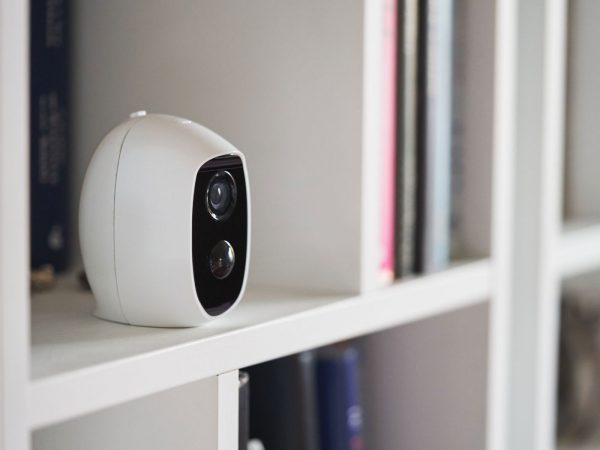

Another advantage to going wireless with your security system is flexibility. The absence of wires allows you to maneuver your devices and put them in any spot that you see fit. You can move them as frequently as you want, anywhere you want. Not to mention, you don’t have to think about having to place them near electrical outlets since they are all battery-operated.
The problem with the traditional setup is that you have limited space to move your devices. You always have to place your device near an electrical socket which makes for poor placement. That is, the complicated wiring serves as a dead giveaway to intruders regarding the location of your sensors and cameras.
With wireless devices, you have the ability to maneuver them into the exact position that you want. It’s also much easier to hide devices that don’t have cables, and you can come up with a lot of creative ways to camouflage them.
3. Safety


Wireless systems also offer better security than traditional wired systems. As is the case with traditional systems, you usually have a tangle of wires for every security device. A wired system poses some risks since it only takes a pair of wire cutters and some basic knowledge of security circuitry to disable the system. And even though cutting the wires sets off the alarm, back in the day there was no way to notify the owner if they were away from the house. The wireless systems that we have now are different in that they alert you of an intruder regardless of where you are. It’s also impossible to interfere with the system via wires since there are none, to begin with.
4. Reliability


Most wireless security devices make use of advanced sensors and the best of wireless technology. This makes them more reliable than traditional systems. Most have advanced sensors that detect motion and the slightest movements. Most also offer support for a variety of wireless protocols, which allows you to expand the network with as many devices as needed. The same allows you to integrate with third-party devices. It offers seamless integration and better security for all devices involved.
The battery-operated nature of most of these systems is also very telling. Like many other alarm systems, you can outfit these systems with backup battery supplies. The backup batteries will allow them to work through a power outage or deliberate sabotage of your electrical system. The implication is that the monitoring goes on even after you lose power, and you can still call for help.
5. Device Integration


The ability to connect to smart devices is another benefit of a wireless security system. Most wireless security systems support a variety of wireless protocols. That includes Wi-Fi, Z-Wave, Zigbee, Bluetooth, Cellular, and so on. This allows the devices to communicate with each other and with the hub. It also allows you to add as many security devices as you want to your network.
Also Read: Beginner’s Guide to Smart Home Automation
At the same time, it allows the security system to connect to third-party devices in the network. It can be anything from smart speakers, smart bulbs, smart TVs cameras, doorbells, and so on. In some cases, the central hub of a security system can accommodate third-party devices. For example, the Ring alarm hub can alternate as a hub for devices that run on the Zigbee protocol.
However, security experts warn that connecting your security system to smart devices can put your security system at risk. Hackers may use the connection to shut down your security system and access your personal information. They may also hack into your network to spy on you and your family. This could lead to more serious crimes such as identity theft, burglary, privacy violations, and more.
Final Thoughts on the Best Wireless Security Systems
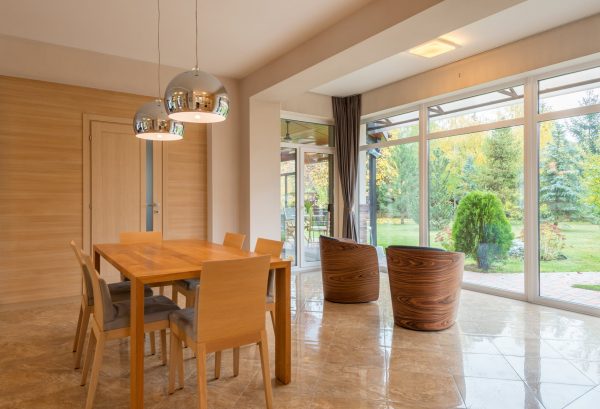

As it turns out, there are a lot of benefits to wireless security systems. First and foremost, they are most flexible and convenient than traditional systems. They also offer self-monitoring, which saves homeowners on monthly costs.
These systems benefit from the latest sensors, wireless communication protocols, software, and features which makes for a more seamless and accurate system compared to the older systems. But the most important benefit is, of course, the sense of security and actual security that it offers.
If you want to future-proof the security of your home and ensure high-quality and accurate coverage, then it’s best to go wireless. It also helps to educate yourself about cybersecurity practices and threats, since these have a direct effect on security systems. Here are articles discussing the importance of cybersecurity in the 21st century, and the best cybersecurity courses available.







